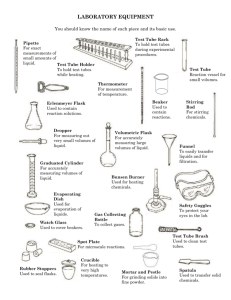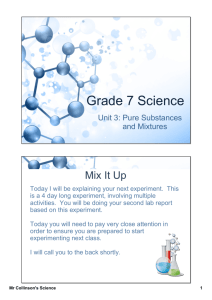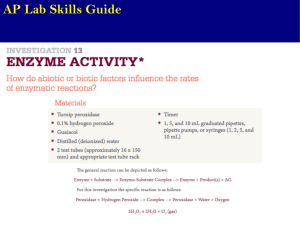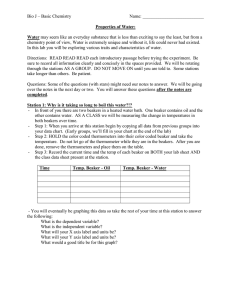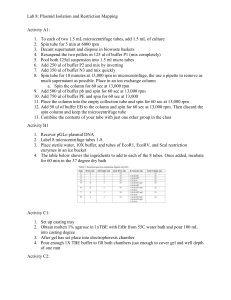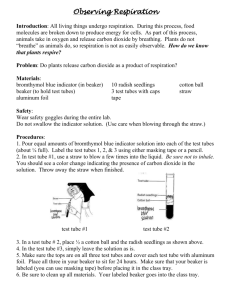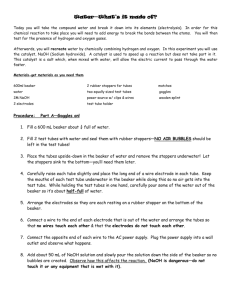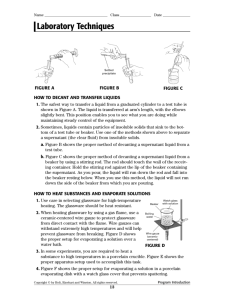acid-base lab
advertisement
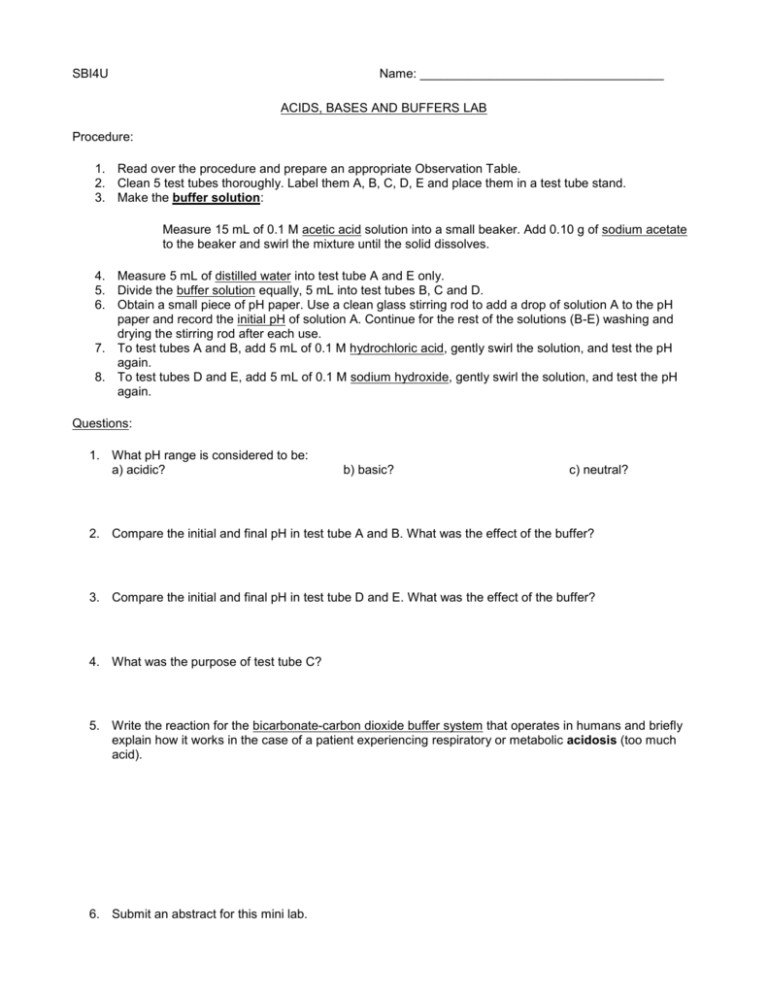
SBI4U Name: ___________________________________ ACIDS, BASES AND BUFFERS LAB Procedure: 1. Read over the procedure and prepare an appropriate Observation Table. 2. Clean 5 test tubes thoroughly. Label them A, B, C, D, E and place them in a test tube stand. 3. Make the buffer solution: Measure 15 mL of 0.1 M acetic acid solution into a small beaker. Add 0.10 g of sodium acetate to the beaker and swirl the mixture until the solid dissolves. 4. Measure 5 mL of distilled water into test tube A and E only. 5. Divide the buffer solution equally, 5 mL into test tubes B, C and D. 6. Obtain a small piece of pH paper. Use a clean glass stirring rod to add a drop of solution A to the pH paper and record the initial pH of solution A. Continue for the rest of the solutions (B-E) washing and drying the stirring rod after each use. 7. To test tubes A and B, add 5 mL of 0.1 M hydrochloric acid, gently swirl the solution, and test the pH again. 8. To test tubes D and E, add 5 mL of 0.1 M sodium hydroxide, gently swirl the solution, and test the pH again. Questions: 1. What pH range is considered to be: a) acidic? b) basic? c) neutral? 2. Compare the initial and final pH in test tube A and B. What was the effect of the buffer? 3. Compare the initial and final pH in test tube D and E. What was the effect of the buffer? 4. What was the purpose of test tube C? 5. Write the reaction for the bicarbonate-carbon dioxide buffer system that operates in humans and briefly explain how it works in the case of a patient experiencing respiratory or metabolic acidosis (too much acid). 6. Submit an abstract for this mini lab.

